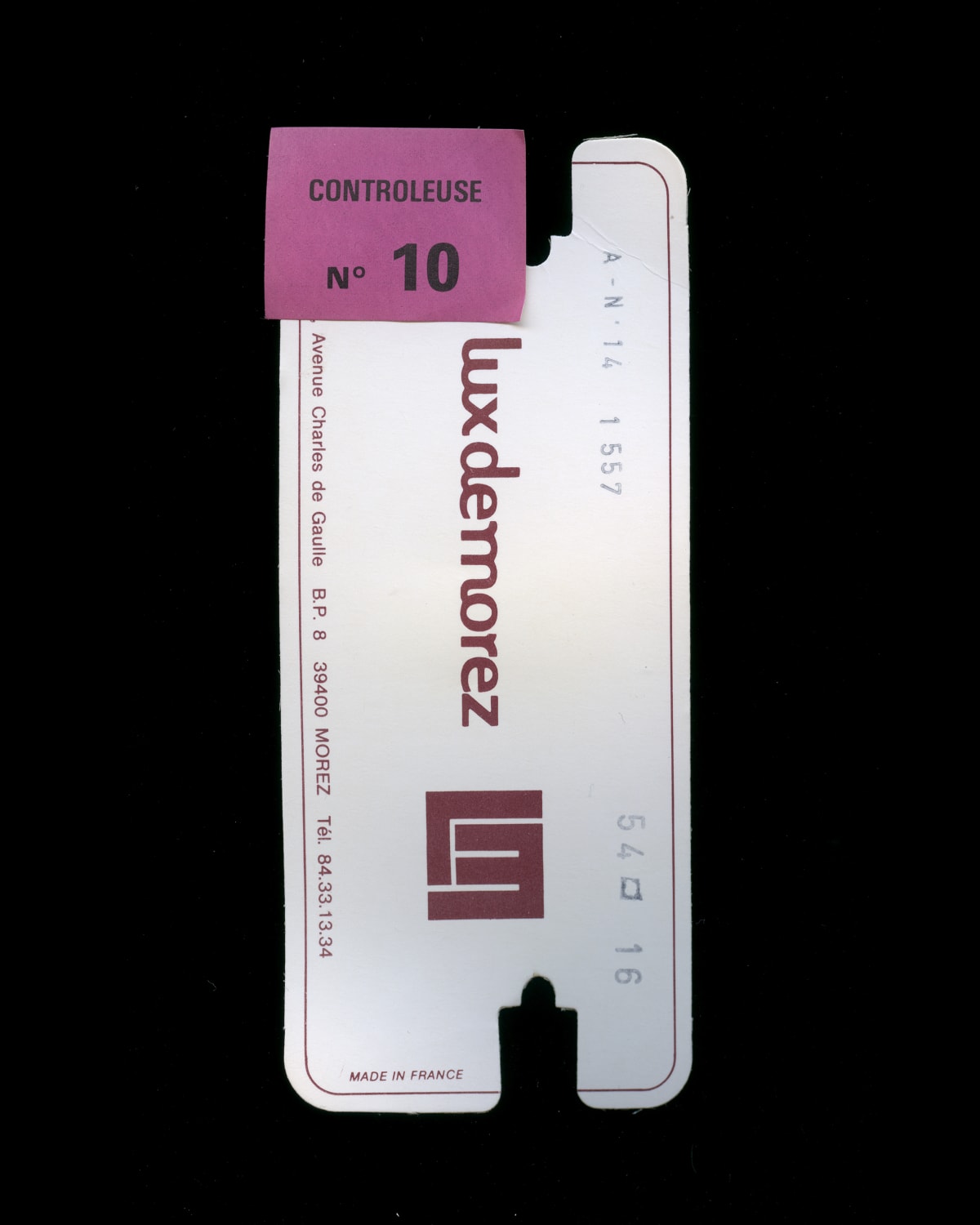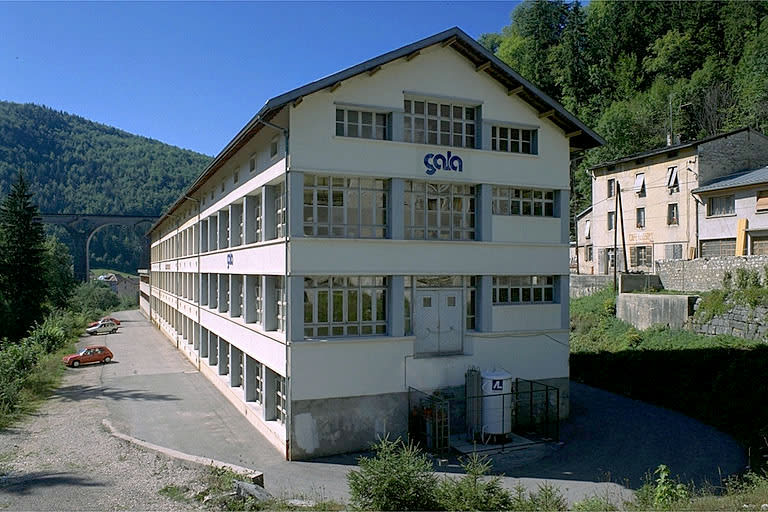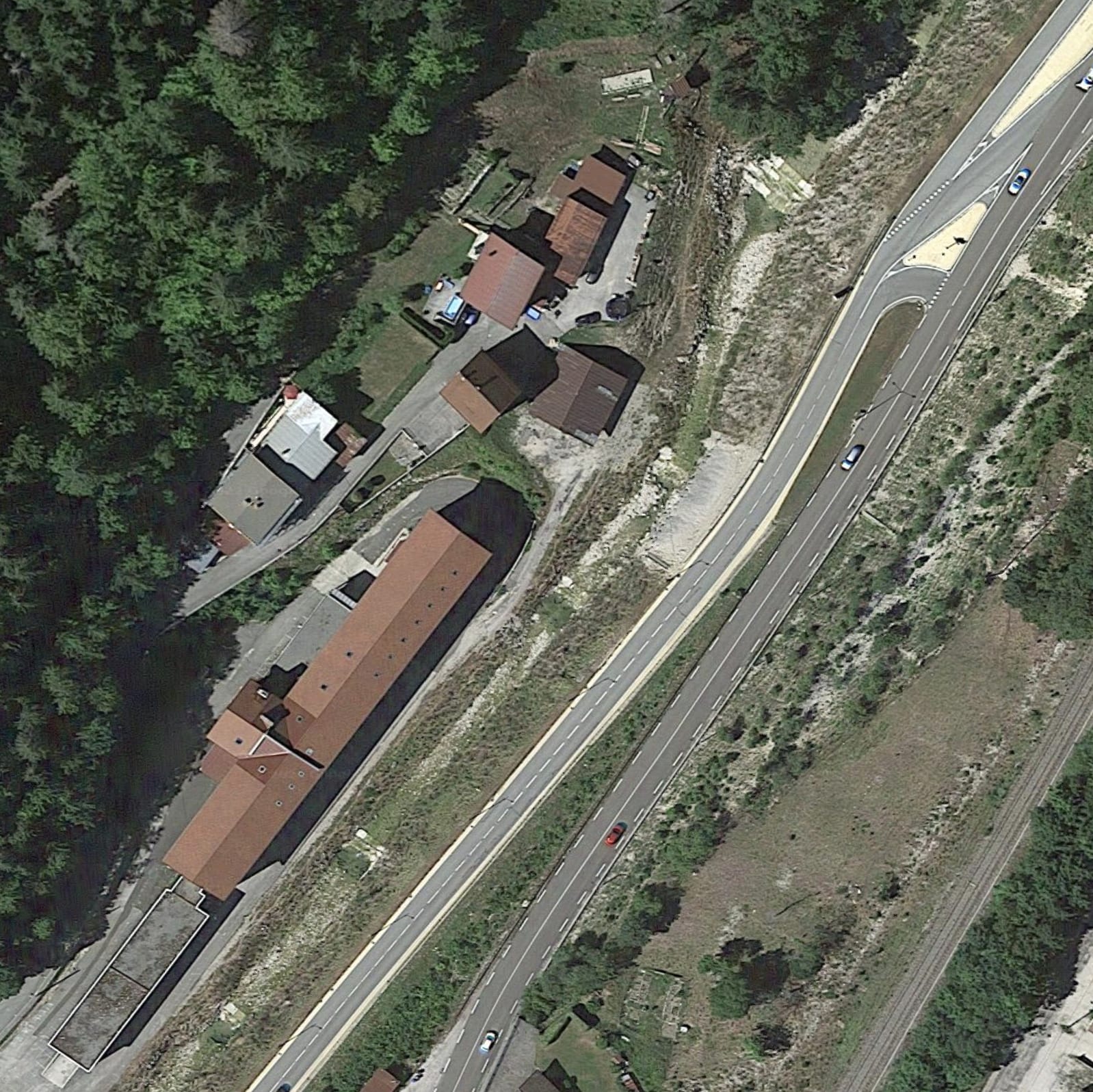Earlier this year, something happened that doesn’t happen very often: we came across a few boxes of untouched, quality metal frames from the 1980s and early 1990s.
We found them through a fixer, but they originated in Lux de Morez in the Jura region of France, where some of the world’s best glasses manufacturers existed (before everything became ‘fast-fashion’). Whereas Oyonnax was renowned for their work in plastics and acetate, Morez factories in this region are specifically known for their fine metalwork. The frames we found were manufactured by GALA/Lux de Morez just before ESSILOR bought them at 12 Rue Voltaire in Morez.
SOME CONTEXT
We got our hands on these metal frames through a fixer – we think it was an Italian distribution company, though it’s hard to tell. They were untouched – they even have the factory’s quality control sticker still attached to them. This was usually a woman working at the factory (we know because we only see notes from the controleuse) who would randomly check a pair of glasses from a batch, test their quality, and add a stamp to show that everything was all right and proper – in this case the adjustment.

We’re excited about metal because it has been relatively difficult to find good quality vintage metal frames – the ones you find easily are usually cheap-looking or kitsch. Think rhinestone embellishments, hand painted designs, glued-on pieces… the 80s you know?? Not exactly timeless everyday looks.
The 70s and 80s were also the period when major fashion brands started to have an outsized role in all clothing production, which extended to glasses eventually, too. It’s when brands started to license their name to manufacturers to put on their frames. Italian designers like Armani were pioneers in this. Result? Product value became less and less attached to actual quality, and instead became attached to the immaterial value associated with brands, logos, and advertising.


EYEWEAR CHEMISTRY 101 A.K.A THE VARNISH IS VANISHING
Another complication of working with metal is that surface treatments and coatings like varnish are notoriously tricky. Before the 80s, manufacturers managed to make high quality metal frames because collections were small and in most cases, people were happy with silver and gold-looking frames. When colored frames came into style, metal frames took a turn for the worst. Even today, brands have a lot of trouble making surface treatments that last. For instance, if you don’t get the temperature and density of the varnish exactly right, it will wear off, or won’t be scratch resistant enough. In short, the combination of major brands taking control, everything becoming seasonalized and ‘fast’ fashion, and everyone wanting colorful glasses because it’s the 80s resulted in metal eyewear that was subpar.
This is why gold-filled frames have remained the highest quality option throughout the 20th century. When the techniques for manufacturing gold-filled glasses are done well, the light and flexible frames are also very resistant to damage. More history on certified precious metals in the Upper Jura region of France here.


THE FACTORY
The factory itself has a history that gives a lot of insight into the transformation of the glasses industry. Plus, it’s a cool building and we like cool buildings. The factory was built around 1950 according to the plans of the architect Jean-Constant Duboin for the watchmaking company Odo. In 1964 and 1965, the company had the factory enlarged by the Saint-Claude architect Auguste Favier to house its mechanical workshop, producing Westminster clocks and chimes as well as reels for fishing rods. In 1973 and 1974, a new extension was built by the architect Léon Cretin for the offices and the research department. In 1987, Odo sold the site to the Lux eyewear company of Morez (successor of Louis Jacquemin et Fils).
In 1991, it produced 500,000 pairs of glasses. In 1999, it was absorbed by its main shareholder, the Logo S.A. group (a former Essilor subsidiary founded in 1992). The building itself sums up the Morez area history pretty well: everything got bigger and bigger, then vanished. The most skilled families had more business, bigger plans, until they were so big that they didn’t make the decisions anymore. Then the decision was taken to shut it all down.
IT’S NOT ALWAYS SUNNY IN THE SALVAGE BUSINESS
Our metal dig didn’t go exactly as planned! We bought a large quantity of these metal frames, but a portion of them weren’t salvageable. This made us feel like it would be a good time to share more about how we work. First, quick s/o to Rotor DC, who are local pioneers in salvaging; they have been and continue to be mega creative, resourceful, and inspirational in their deconstruction adventures. They wrote an interesting post about the salvage biz as well, and many of its insights resonate for us. TLDR – selling new materials is much easier, salvaging is a labor of love.
For the salvage or secondhand/vintage business that we are in, all of the investment is done up front. We can only sell what we have in stock. There’s a lot of risk involved in our sourcing trips – because we have to sniff out quality suppliers and make an offer at a good price and if something goes wrong then we run out of stock! If something goes right, then we need extra storage. We can’t just order more, like a “new-new” store would. We always have to buy more knowing we can’t sell it all right away, which is why you could say we’re so focused on timeless pieces.
This time, we did some good sniffing – we researched the factory and its history, checked the facts, compared the stock to our archives, analyzed photos and quality, and yet even after all this and over 30 hours back in our lab sorting, cataloguing, and refurbishing the frames, we discovered that a portion of the colored frames had a defect, making them unsellable. It hurt, but only for a bit, because we’ll be using that stock for spare parts and repairs for the rest of our inventory. We say when life gives you lemons, make… sunglasses!!
BRUSHING UP AGAINST METAL PERFECTION
Characteristics |
|
| Manufacturer | GALA / Lux de Morez |
| Made in | 1980s |
| Period | Morez |
| Brand | Essilor |
| Technical | Pilot – double-bridge |
DISCOVERY |
|
| Location | Italy |
| Year | 2022 |
| Digging Type | Through a fixer |
Made by Lux de Morez for Essilor when they were the only shareholder, before they eventually bought the company. It’s a classic, probably produced in large quantities, but you can see a good amount of valley savoir-faire in them. The welding is clean, a lot of parts have been designed specifically for the model, meaning very few standardized parts, which also means that each part has been created with custom developed tooling (hence implying a large quantity). Speaking of surface treatment, here we notice a “brushed” anthracite patina. The 367 is exactly the kind of piece we want in several sizes at the shop, so we can adjust it to practical perfection, in optical or solar. In this case, it was a nice surprise to find it in 6 size combinations, 3 nose sizes (17-19-21mm) and 2 rim sizes (51-53).
Archive: A streetview satellite picture of the Logo-Lux-Gala factory.
To sum it up – we have beautiful metal frames in the store, in a wide range of sizes and colors.
But only a few! Come check them out while they’re still in our care.




 Back to journal
Back to journal 







